I have to admit that prior to using a Benchmade Knife, I was a sub $100 knife guy.
My thought process here was pretty simple – affordable knives do work, and if I ever lost a knife it wouldn’t hurt my wallet as much as a more expensive knife. Yet like so many other tools, knives are something where you get what you pay for – and my time using affordable knives has seen me do a lot of sharpening, with a few unexpectedly sharp surprises along the way. I’ve had an affordable knife open more than once in my pocket, and had a knife for a short while with a locking mechanism that quite simply didn’t lock – so let’s just say I made a point to handle these knives with extra care. And, when it came time to use one of these knives, all it took was a few dirty cardboard boxes or a quarter of an elk to make a noticeable difference in the edge. All of this left me wondering – what did paying more for a knife really get you?


In 2019, I decided to find out what owning a good knife was like, and I picked up a couple of knives from Benchmade so that I could use them day in and day out for a couple of years before ultimately writing this review and sharing my experience. The first Benchmade product I picked up was the Auto-Triage. Actually, I picked up two, because I wanted to put a proper rescue knife in the hands of a real first responder so I enlisted the help of Adam, who is a Fire Department Captain in my home state of Colorado. I simply asked him to use the Auto Triage as his duty knife and let me know what he thought. I would adopt the other Auto Triage as my Every Day Carry (EDC) knife to see how I got on with it.
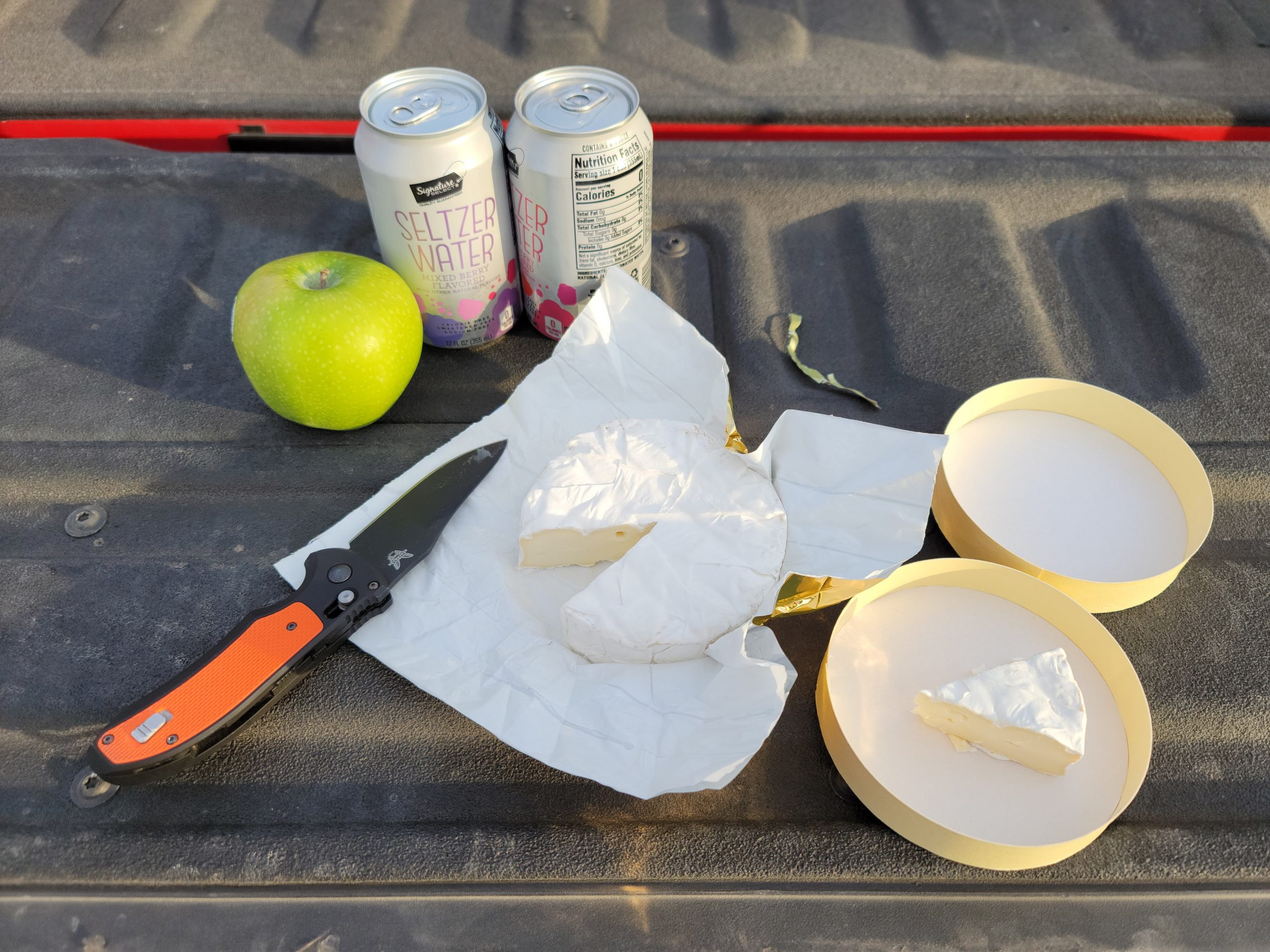
The auto triage is part of Benchmade’s Rescue knife family, and as such the knife features an auto opening hook, and a carbide glass breaker. There are two major types of blades to choose from – the drop point blade (serrated or non-serrated) is 3.58 inches long, and the opposing bevel blade is 3.35 inches long. The handle is 0.58 inches thick, which when compared to some of Benchmade’s popular EDC knives, works out to be between one to two tenths of an inch thicker. Weight for a drop-point Auto Triage is 5.75oz. As an auto knife, it’s also important to check out the automatic opening knife laws of your state before picking one up to make sure you can legally possess one. Thankfully in Arizona, auto knives are still good to go.

For folks who live in areas where auto knives are not allowed, I also picked up a 917BK, to get to know one of Benchmade’s manual opening rescue knives. The 917BK has a 3.48inch blade (the serrated version is found on the 917SBK) a manual opening hook, and the same carbide glass breaker as found on the Auto Triage. The handle on the 917 is slightly narrower than Auto Triage at 0.55 inches. Weight is 5.28oz.


I have medium to large sized hands based on glove size, and both of these knives feel fantastic in my hands. Benchmade has clearly designed a knife handle or two over the years, and both of these knives can be manipulated with confidence whether you have wet hands, bloody hands from procesing game, or even hands covered in brake fluid when you’re trying to recover a crashed vehicle that somehow managed to lock it’s rear brakes on and you just need to cut a soft line to release the brakes. I’ve had no problem finding the controls on either of these knives with mechanic-style or nitrile glove on. The Auto Triage also has a textured grip inlay in the aluminum frame, and while this does serve to provide additional grip, it can also make slipping the knife into a pocket for carrying more of a challenge. The tradeoff here is that it takes more effort to pull the knife out of your pocket – and that is a good thing to help keep this knife from jumping ship.

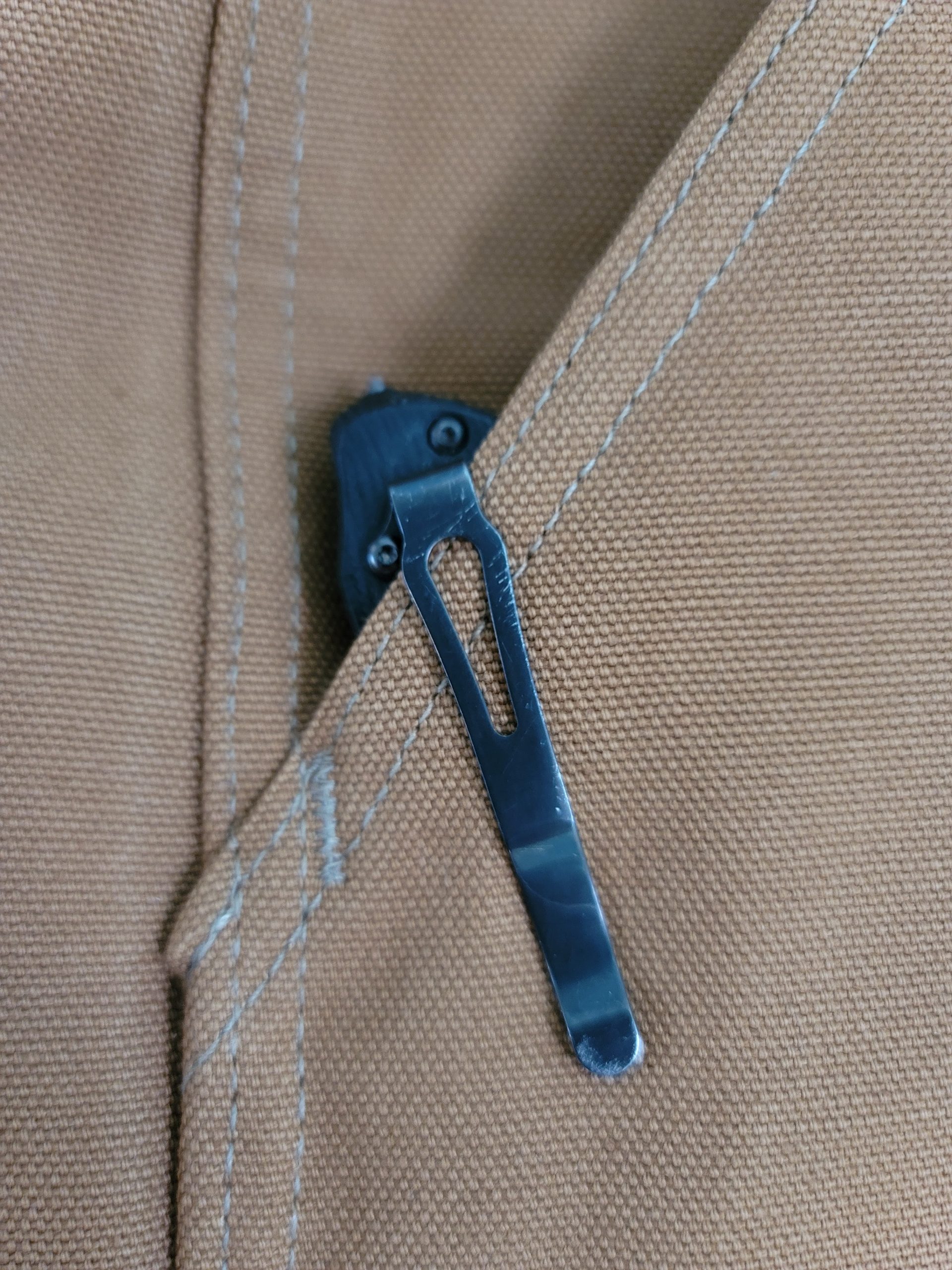
Speaking of in your pocket, both knives ride well in any pocket I’ve placed them in and their size has not proved to be an issue during carry. There are definitely times when I’m reminded that I have a knife in my pocket, but carrying these knives has never led to any discomfort from sitting on them, or feeling like you have too large of an item in a pocket. The one notable exception here is with what I’ll just call performance seats like you would find in a track car where you’re sitting on a covering over carbon or in a molded seat. If your going to be spending any time in such a car, don’t carry anything in your back pockets. I normally wear pants and shorts from brands like 5.11, Kuhl, prAna, and Mountain Khakis, so I can’t speak to what life is like when carrying these knives in Jeans or other styles of clothing – but I would expect similar results.

The first time you use either of these knives you will instantly begin to appreciate their quality and level of performance. Starting with the blades, both knives are made using quality steel (S30V for the 917BK and N680 for the Auto Triage), and while there are certainly better and more exotic steels out there, the performance and durability advantage is obvious when compared to the $20 knives I’d been using in the past. Performance shows through in edge quality, but the biggest difference I noticed was in edge durability – I could get a <$100 knife to be split-a-hair sharp, but it was only a few cuts away from loosing that level of sharpness, even when setting a similar edge angle. With both of these Benchmade knives, you keep a sharper edge much longer, even when you’re cutting things with magical edge dulling powers, like game hides and dirty cardboard boxes.
This improved edge retention benefits the user in two ways: Less sharpening, and a knife that is usually sharper as you’re not completely dulling the edge if you use your knife for an extended period. This means that when you do go to sharpen your Benchmade, you just need to hone and strop the edge. You don’t have to reshape it like you would sometimes have to do on other more affordable knives. And these particular Benchmade knives are so much more than their respective blades.
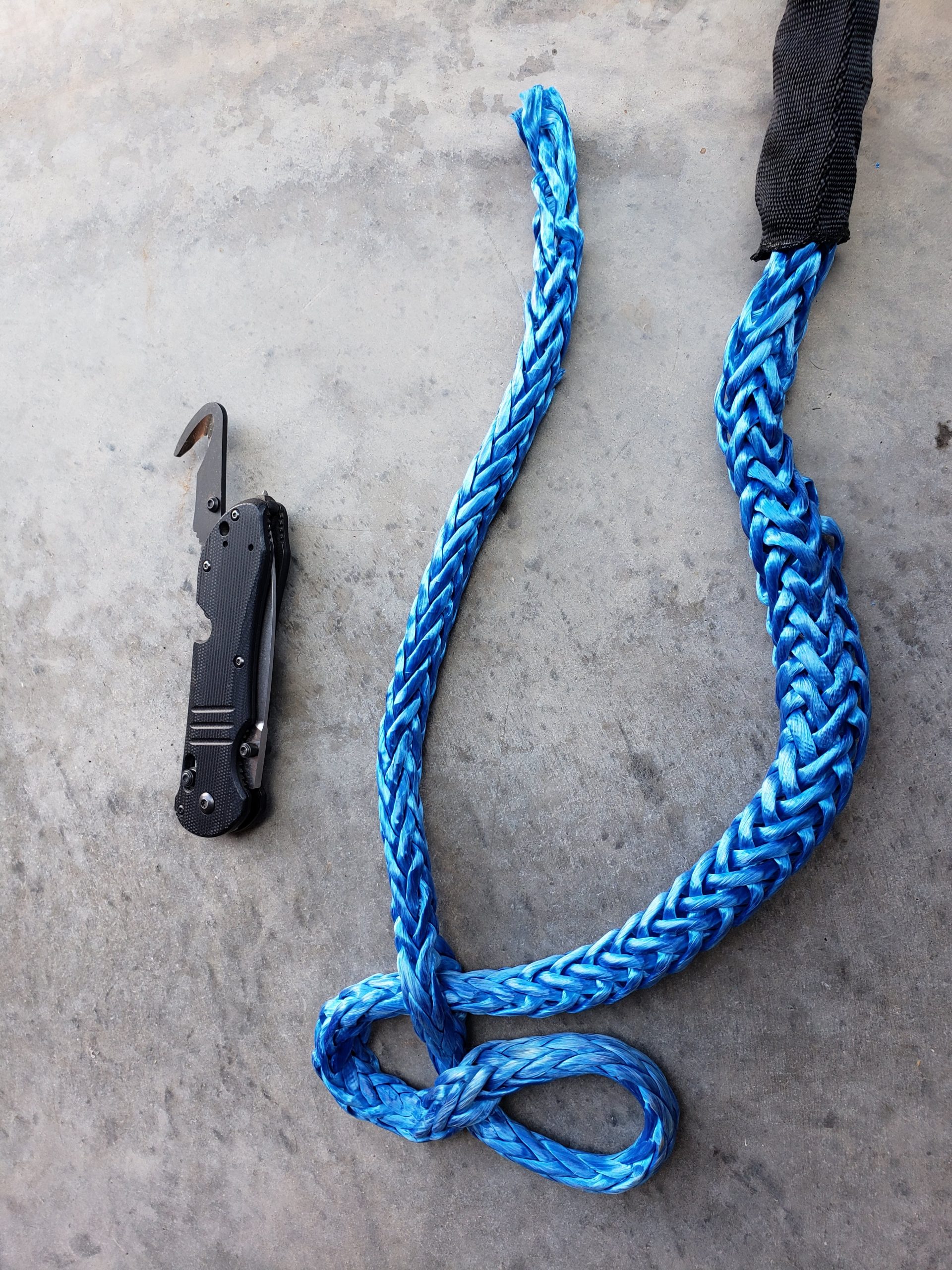
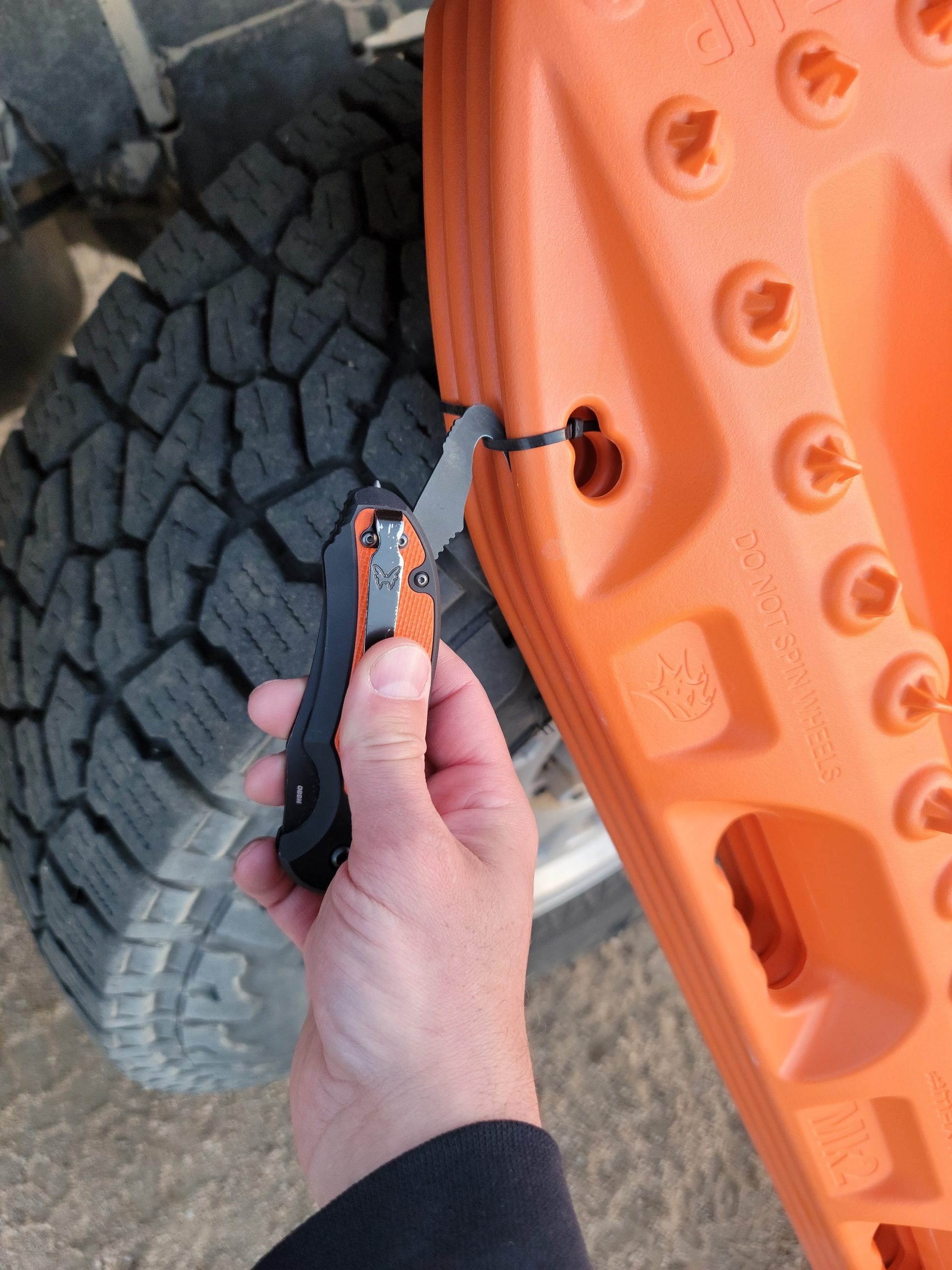
Each of these knives have a rescue hook and glass breaker, and if your sitting there thinking that you’re never going to use either of these features – I thought the same thing too when I first got these knives, but I quickly learned how versatile they are. Yes, the rescue hook can lance through seat belts and other textiles in a rescue situation, but it also does an outstanding job of cutting everything from zip-ties to mesh bags of fruit you’re tying to open. Using the hook is a much safer alternative to using the main blade in those cases as there are things you don’t want to cut nearby. You can tuck the hook into a bundle of wires held by a zip tie and not have to worry about the point of your main blade nicking a wire in the bundle, and in so many other applications where you want to make a more protected cut. The rescue hook is one of those tools you’ll find yourself using all of the time.

The glass breaker on these knives is something that I hope folks never have to use – but in the interest of preparing you for what it’s like, know that it works far better than you think. It turns out, safety glass works a little differently in real life than it does in the movies. As Adam reported: “I had the opportunity to use the glass breaker on a number of cases, and it’s almost comical how little effort it takes to shatter safety glass with a carbide glass breaker. Factor in the adrenaline and stress that everyone will experience to some degree when they’re using such a tool in a real situation, and it’s easy to see how someone would smack a panel of safety glass much harder than they would need to.” I’ll call that a win.

Mechanically, both of these knives have been absolutely flawless in their function, and ‘accidental’ drops in the mud, sand, snow, with only an occasional rinsing for cleaning have done nothing to impact their operation. The blade control mechanisms have worked perfectly, and I’ve had no accidental openings or other unexpected behavior, which is not something I can say about some of the cheapie knives I’ve used in the past. Its nice to know that you can carry either of these knives, and know that you’re packing a tool that will perform day after day no matter what happens.

I recently sent the 917BK into Benchmade to try out their Lifesharp service, which is a full cleaning, servicing, and sharpening of the knife at no cost to the owner. All you have to do is pay for shipping your knife to Benchmade. My 917 was returned to me cleaned, grit free, and sharp as new. Not bad for the cost of a small flat rate box and five minutes of my time. It’s also worth noting that Benchmade will provide replacement belt clips at no cost to the owner too. That’s a much better deal that what I’ve done in the past that involved reshaping and re-tempering the belt clip off another knife… But that’s another story.
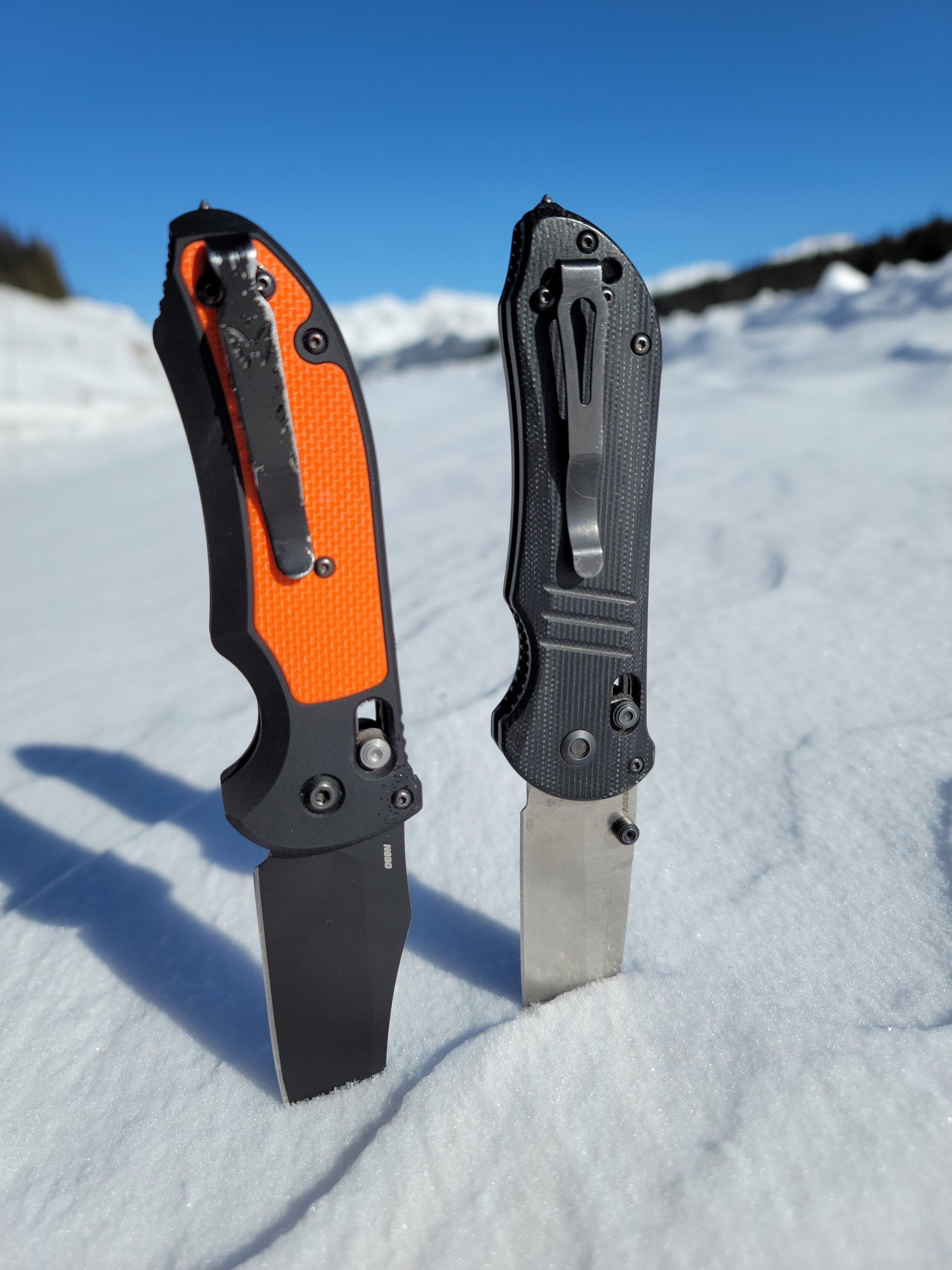
So it’s all sunshine and rainbows with Benchmade knives then? Honestly, I’ve been pretty happy with my purchases. And that purchase price is about the only real drawback that I can find about either of these knives. You pay some good money upfront, and if I’m being honest its the purchase price that has kept me from jumping in sooner. But as they say, “Buy once, cry once”. I’m glad that I did. Now, every time I go to loadout a pair of shorts or pants, I know I’m packing a quality tool with me, and the recognition of this fact has also helped me build the habit of making sure that my knife is always in my pocket. Just like we pay more attention to make sure that we’re not leaving our $1500 smartphones behind, it’s pretty easy to build the same habit to check for your knife before you walk away. There is no changing the fact that losing one of these knives would be a bummer – so make sure you don’t leave it behind somewhere.
Benchmade’s 917BK and Auto-Triage won me over, and after more than a year of using these knives, I’ve learned that there is definitely value in paying more for a knife. I kept pushing this article back further and further as opportunities continued to present themselves for use in harsh environments – from the desert sands of Glamis to the snows of Colorado, these knives have been rock solid performers. So if you’re in the market for a quality tool that will last you a lifetime – I don’t think you can go wrong with a Benchmade knife.
FULL DISCOLOSURE: The Author purchased the Auto Triage knives covered in this article. Benchmade provided a sample 917BK at no cost for comparison here.
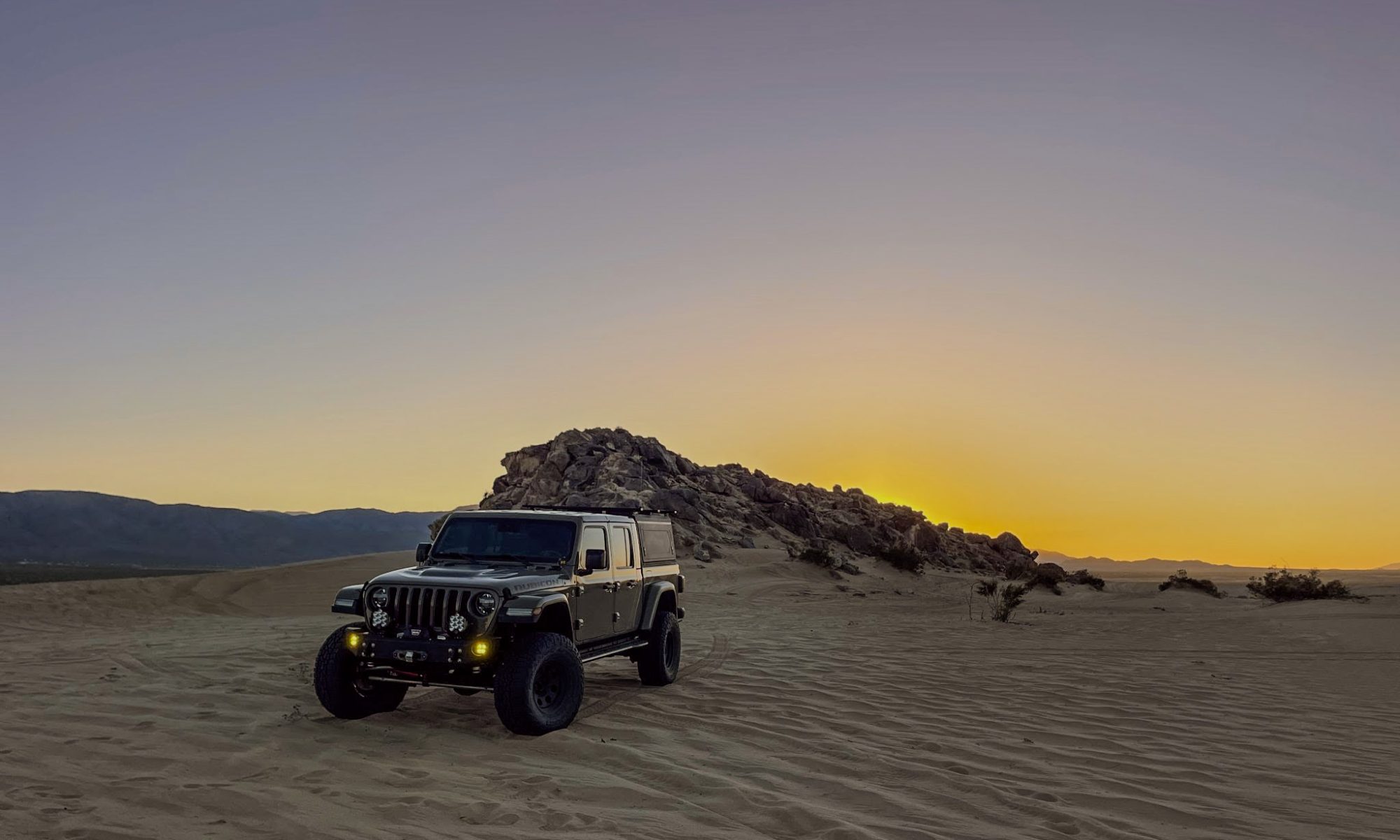


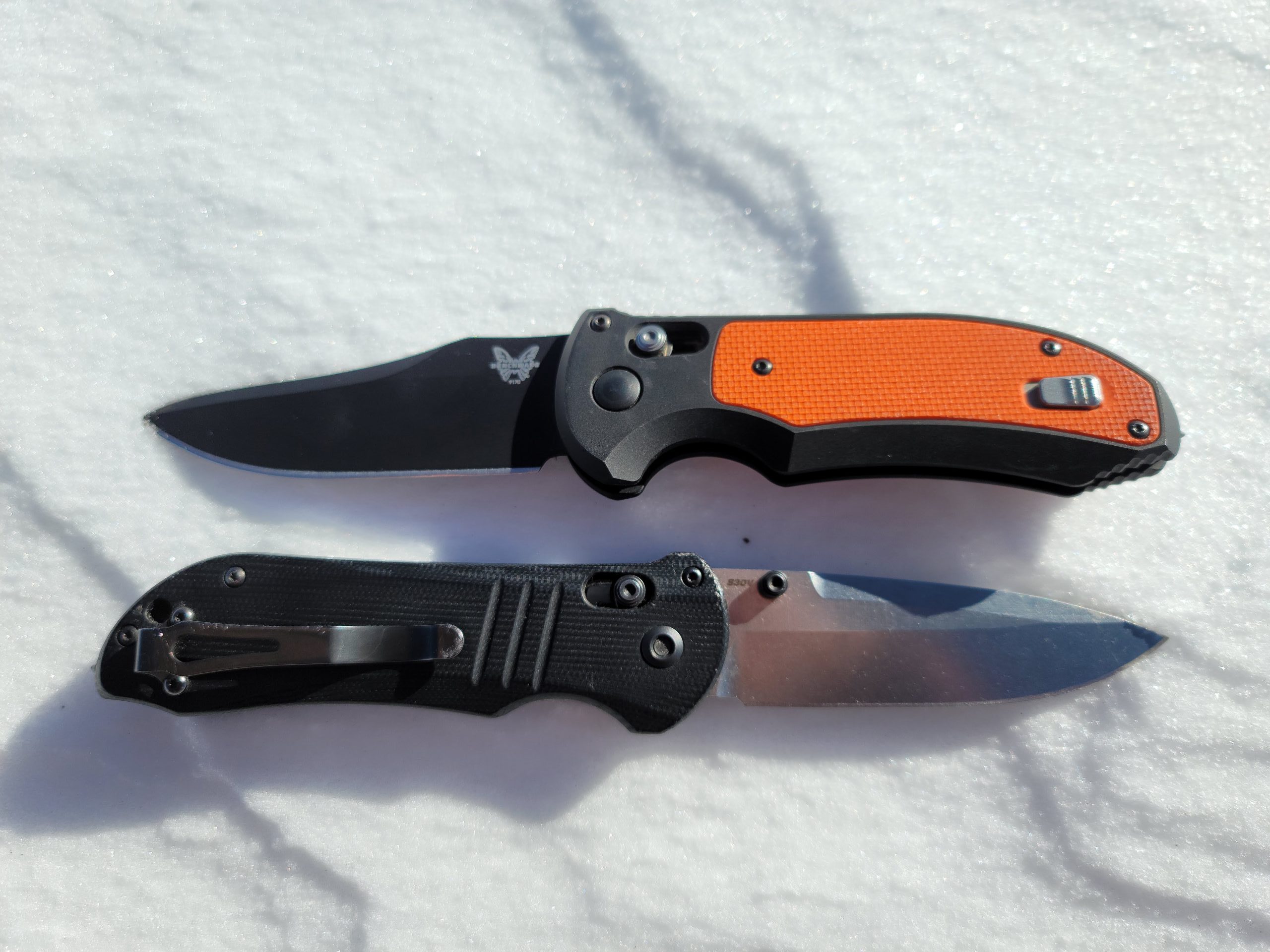
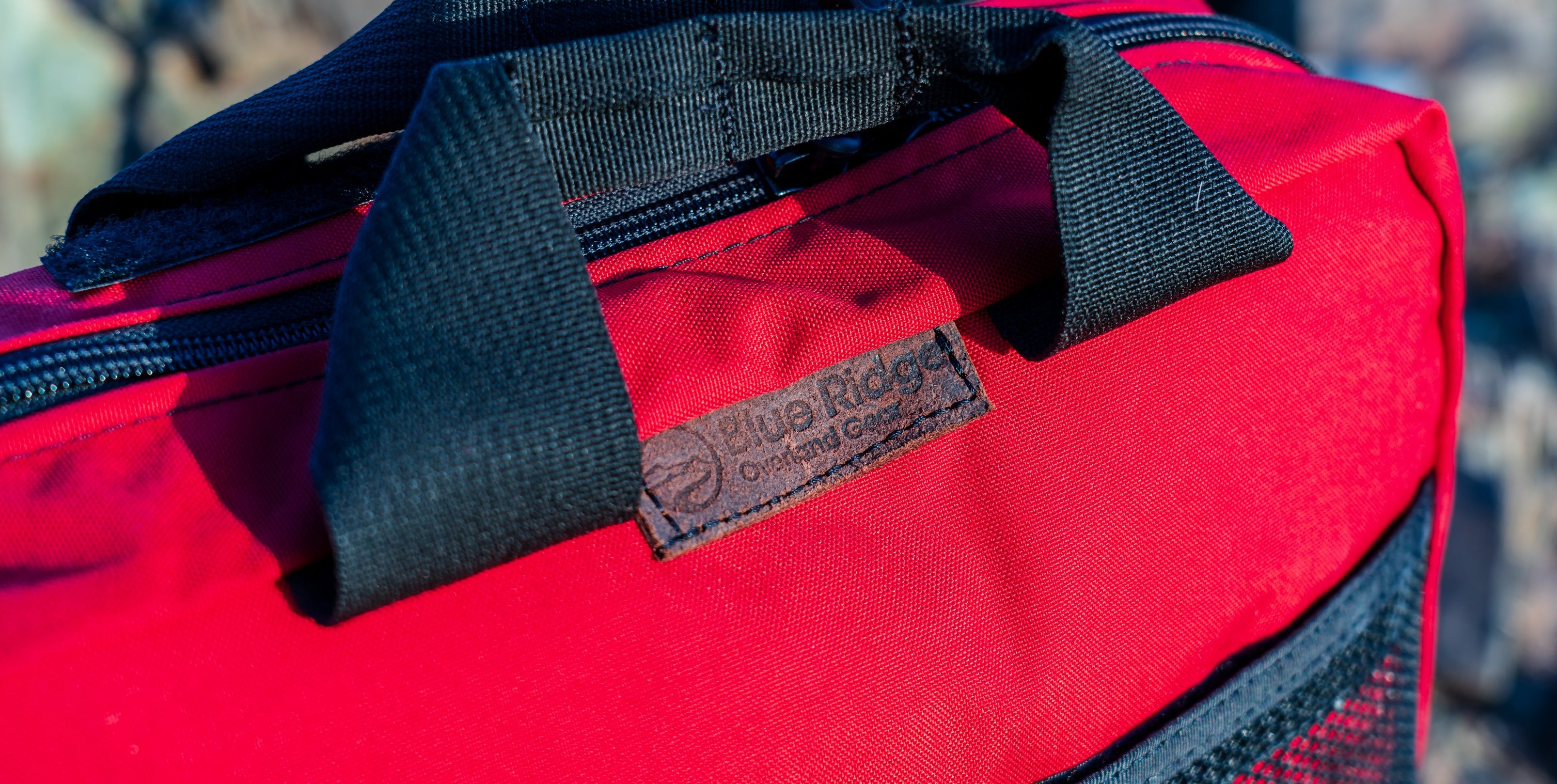
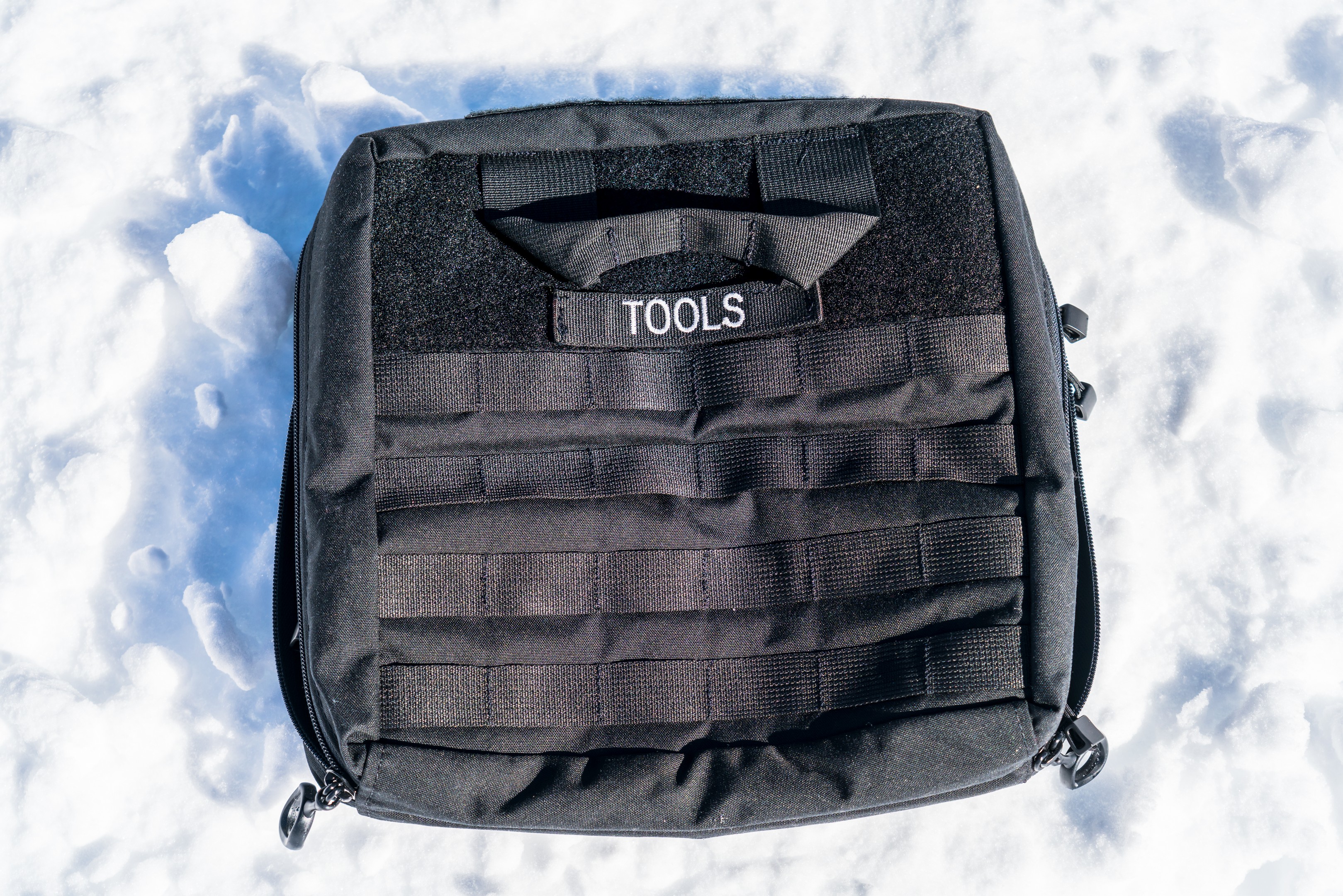

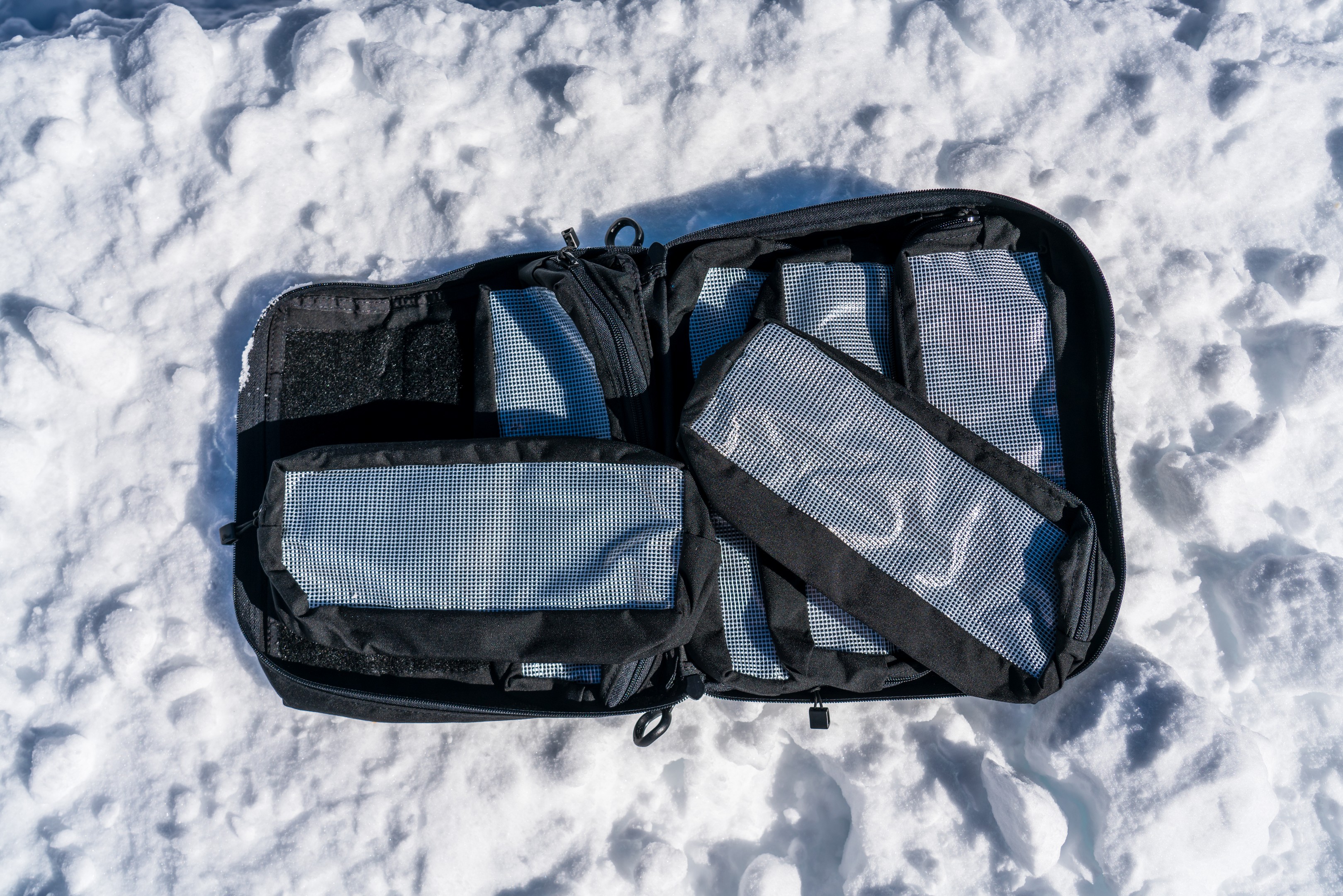
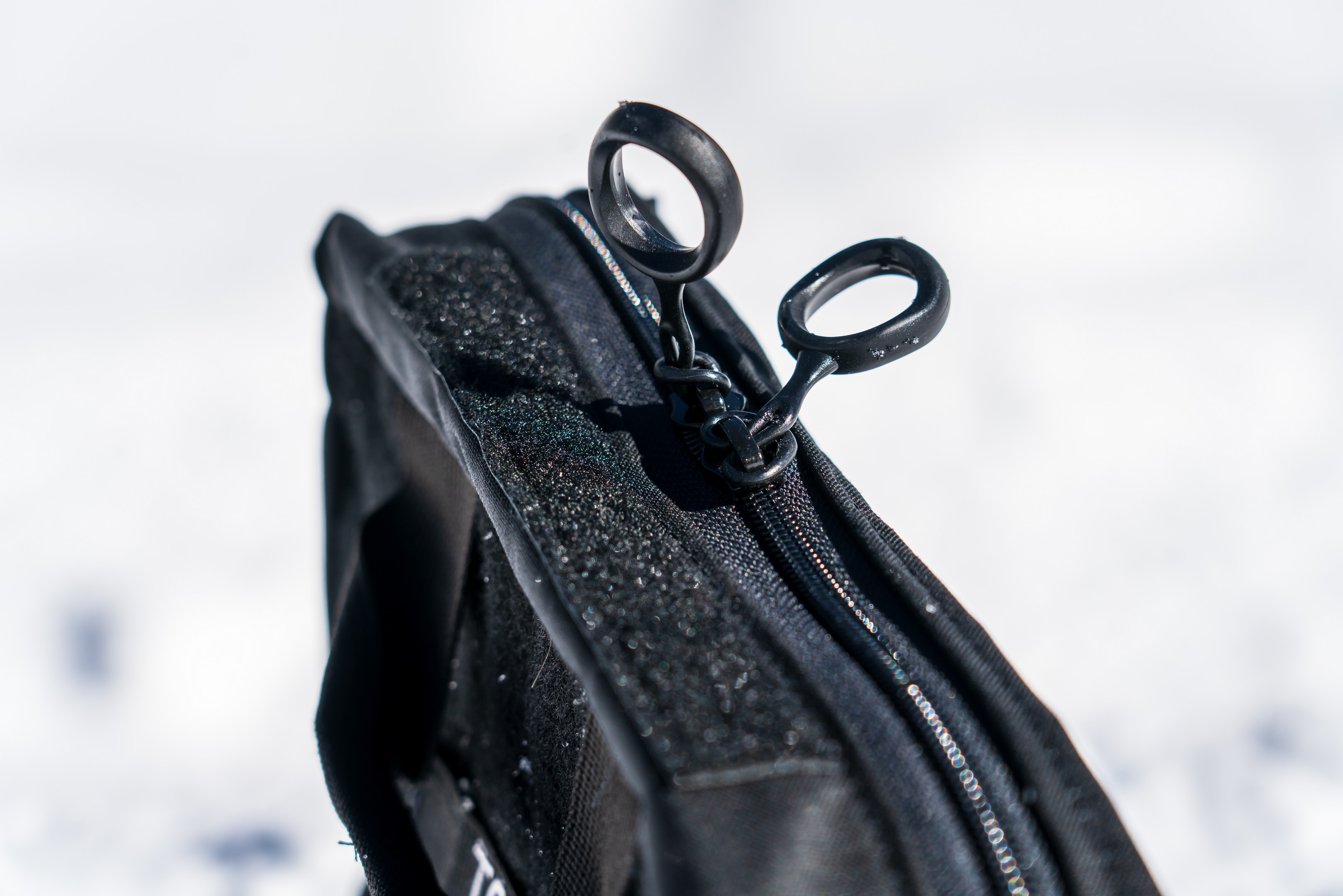
 You read that right – a whole mechanics tool set. SAE and Metric sockets, combination wrenches, screwdrivers, and other hand tools – it all fits in to the BROG Tool Bag. Inside the Tool Bag’s 12” by 12” by 5.5” main bag you’ll find six equally sized pouches which you can use to divide up your kit as you see fit. These pouches attach to the main bag with some properly stout Velcro that’s passed the “I’m an idiot and forgot to zip up my tool bag, I hope my tool pouches don’t fall out when I pick up the bag” test. Each pouch has a string-reinforced vinyl front that somewhat lets you see inside, but I found it much more effective to bust out a roll of cleanroom tape (it doesn’t leave sticky residue behind when you pull it off) and just write the contents on the bag. Plus, I’d rather have the burlier string reinforced front than regular vinyl. The whole thing is made from 500D Cordura, and features MOLLE/PALS webbing on the front, and a pocket on the back, which is perfect for quickly stashing those tools that take a minute to make it back from your buddy’s rig.
You read that right – a whole mechanics tool set. SAE and Metric sockets, combination wrenches, screwdrivers, and other hand tools – it all fits in to the BROG Tool Bag. Inside the Tool Bag’s 12” by 12” by 5.5” main bag you’ll find six equally sized pouches which you can use to divide up your kit as you see fit. These pouches attach to the main bag with some properly stout Velcro that’s passed the “I’m an idiot and forgot to zip up my tool bag, I hope my tool pouches don’t fall out when I pick up the bag” test. Each pouch has a string-reinforced vinyl front that somewhat lets you see inside, but I found it much more effective to bust out a roll of cleanroom tape (it doesn’t leave sticky residue behind when you pull it off) and just write the contents on the bag. Plus, I’d rather have the burlier string reinforced front than regular vinyl. The whole thing is made from 500D Cordura, and features MOLLE/PALS webbing on the front, and a pocket on the back, which is perfect for quickly stashing those tools that take a minute to make it back from your buddy’s rig.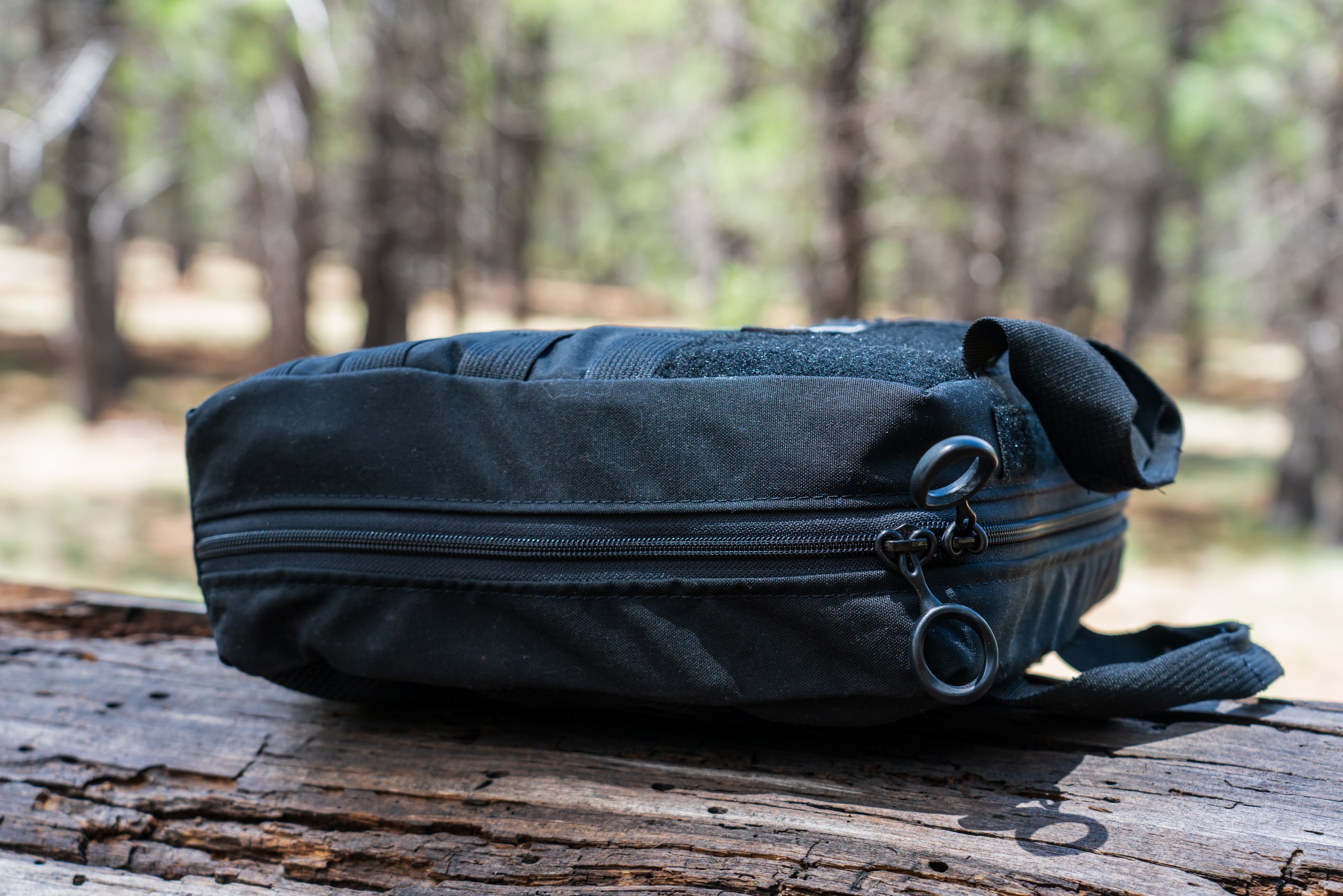
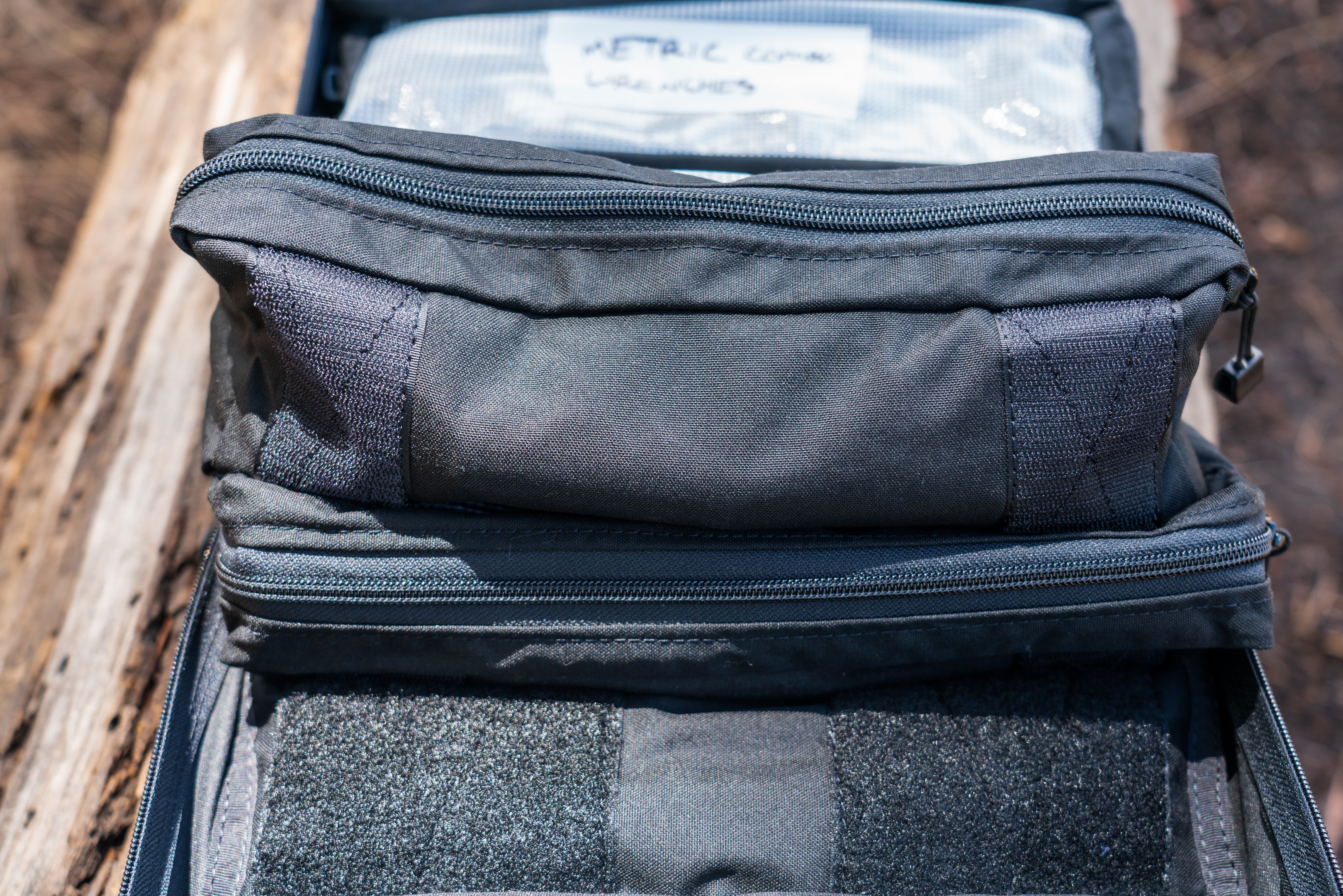
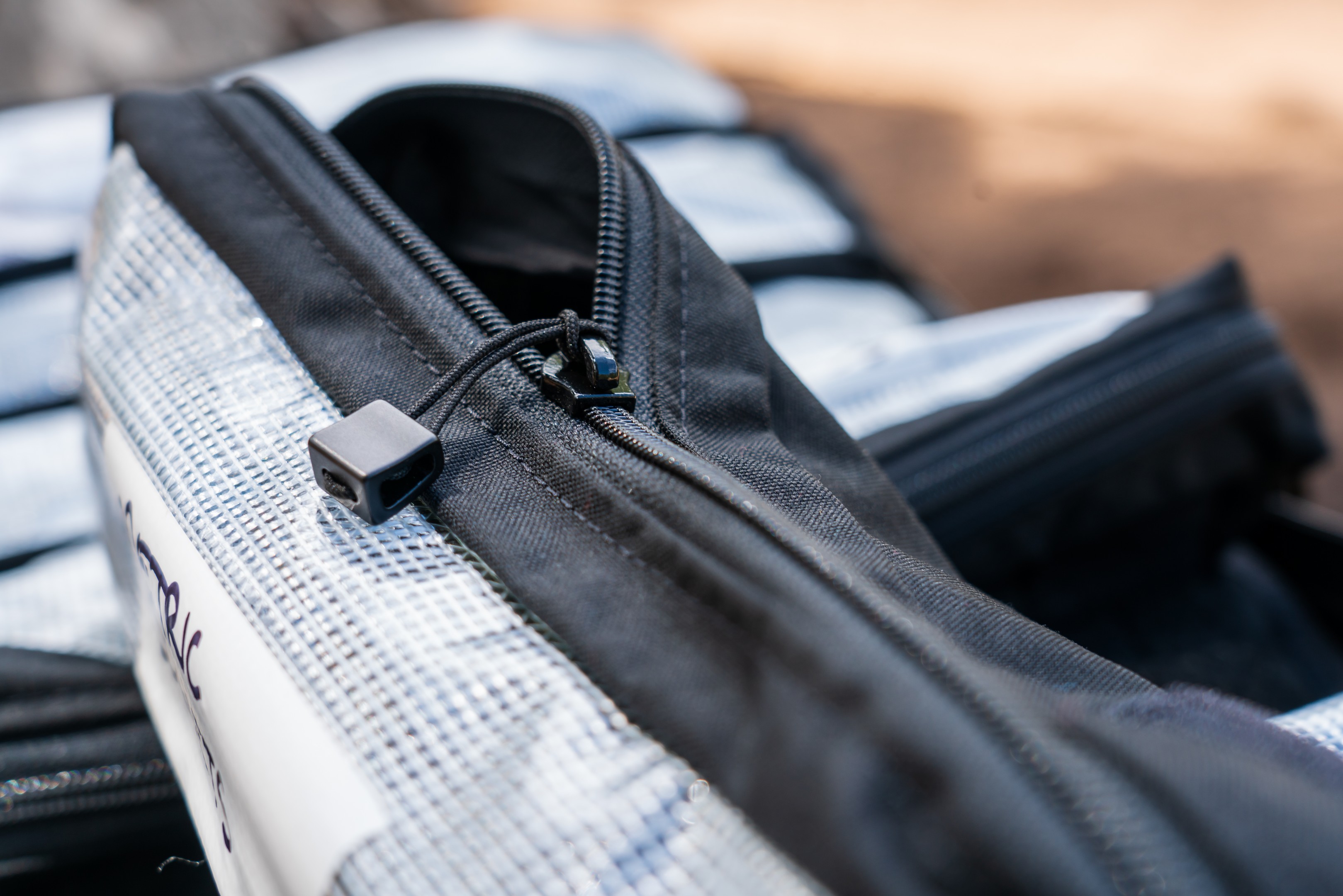



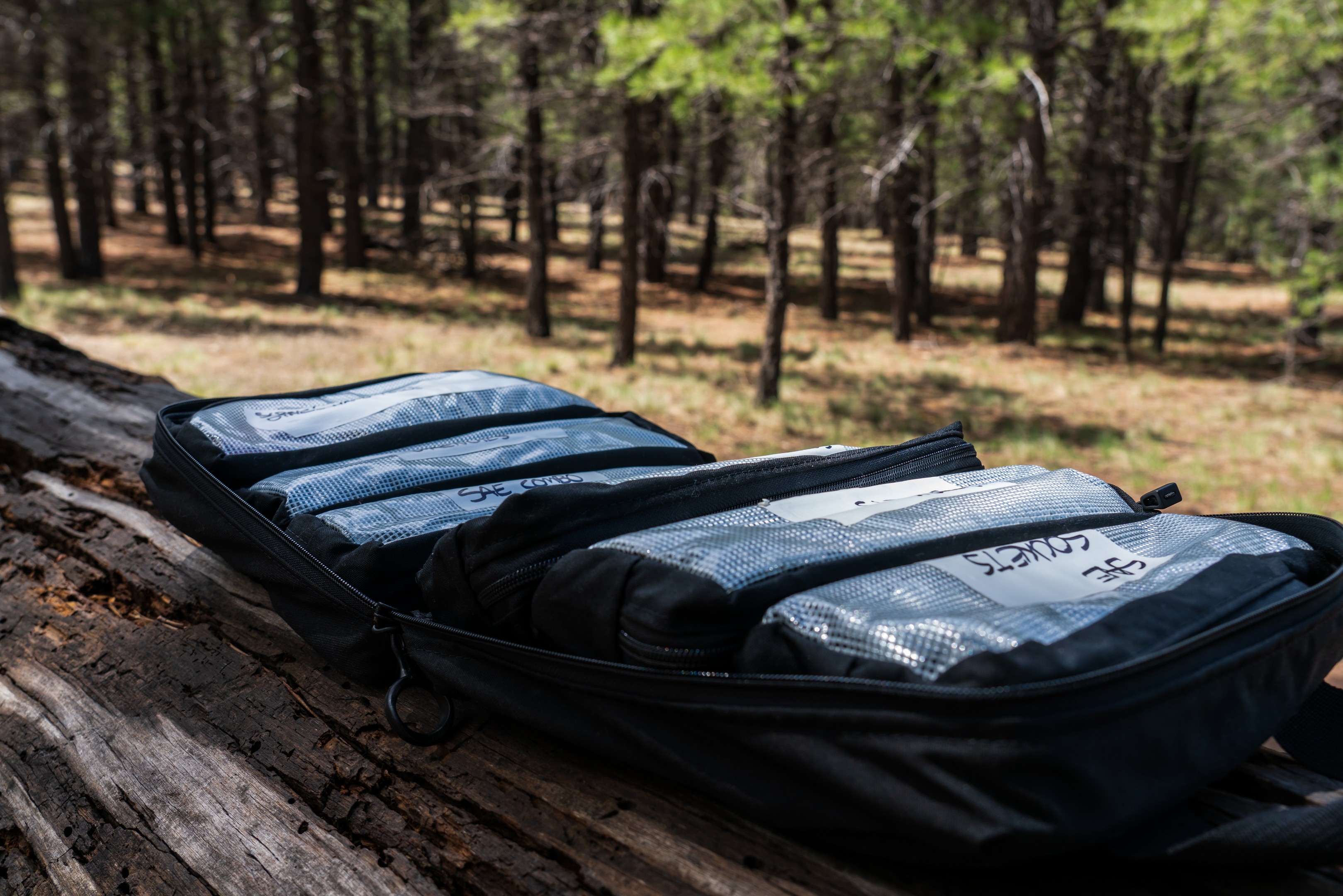
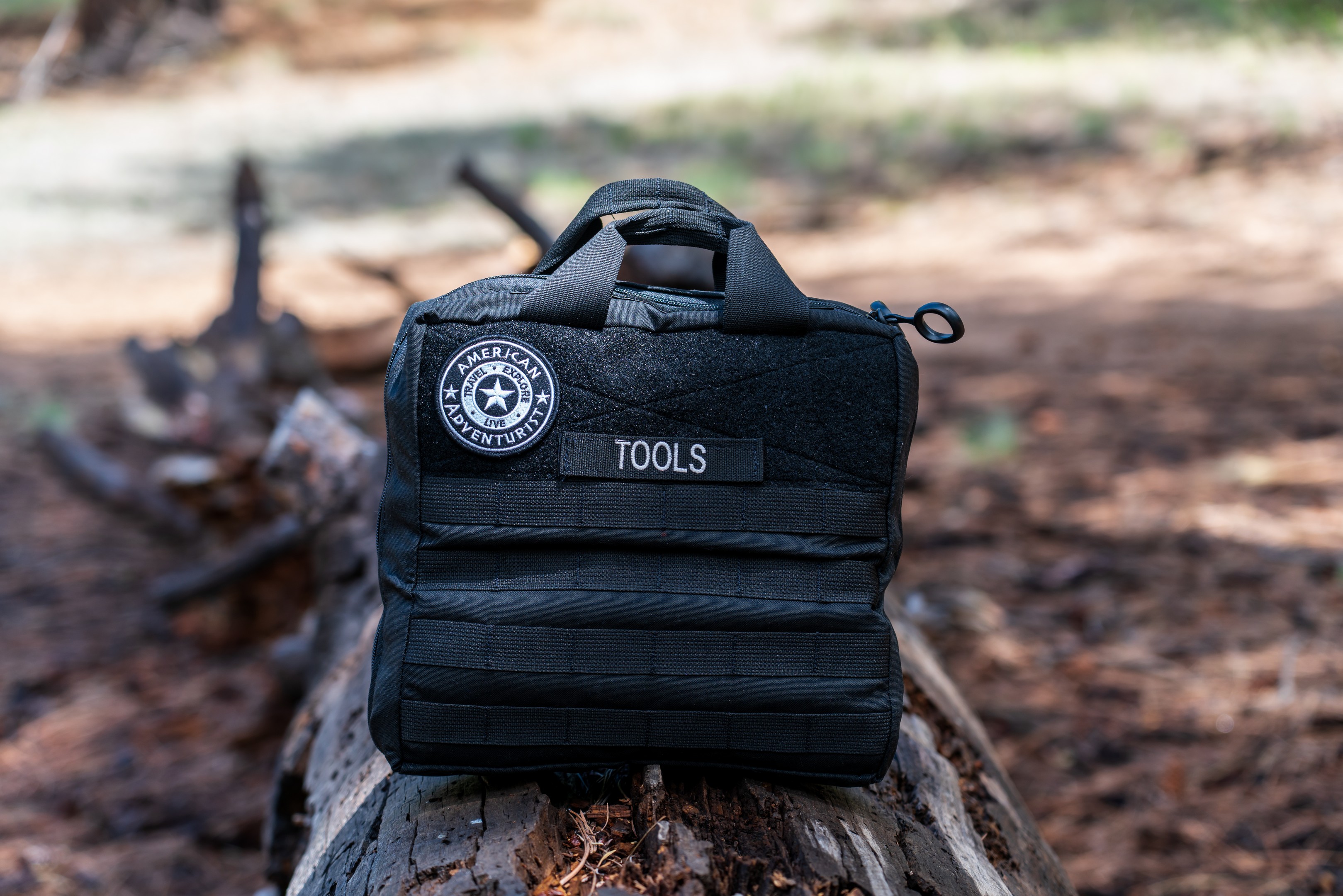 The BROG Tool Bag has logged thousands of miles of travel in my trucks over the last few months. Its been set on the snow, sand, dirt, and rocks, and bounced on the floor board 5.2 kabillion times, but it appears no worse for wear after a quick shower and new label tape to clean everything up for photos. I can’t say the same for the blow molded cases that I’ve seen fail in my lifetime. The BROG Tool Bag is built to last. So it’s no surprise then that BROG has taken this winning recipe for building a burly bag to create their Large First Aid Kit Bag.
The BROG Tool Bag has logged thousands of miles of travel in my trucks over the last few months. Its been set on the snow, sand, dirt, and rocks, and bounced on the floor board 5.2 kabillion times, but it appears no worse for wear after a quick shower and new label tape to clean everything up for photos. I can’t say the same for the blow molded cases that I’ve seen fail in my lifetime. The BROG Tool Bag is built to last. So it’s no surprise then that BROG has taken this winning recipe for building a burly bag to create their Large First Aid Kit Bag.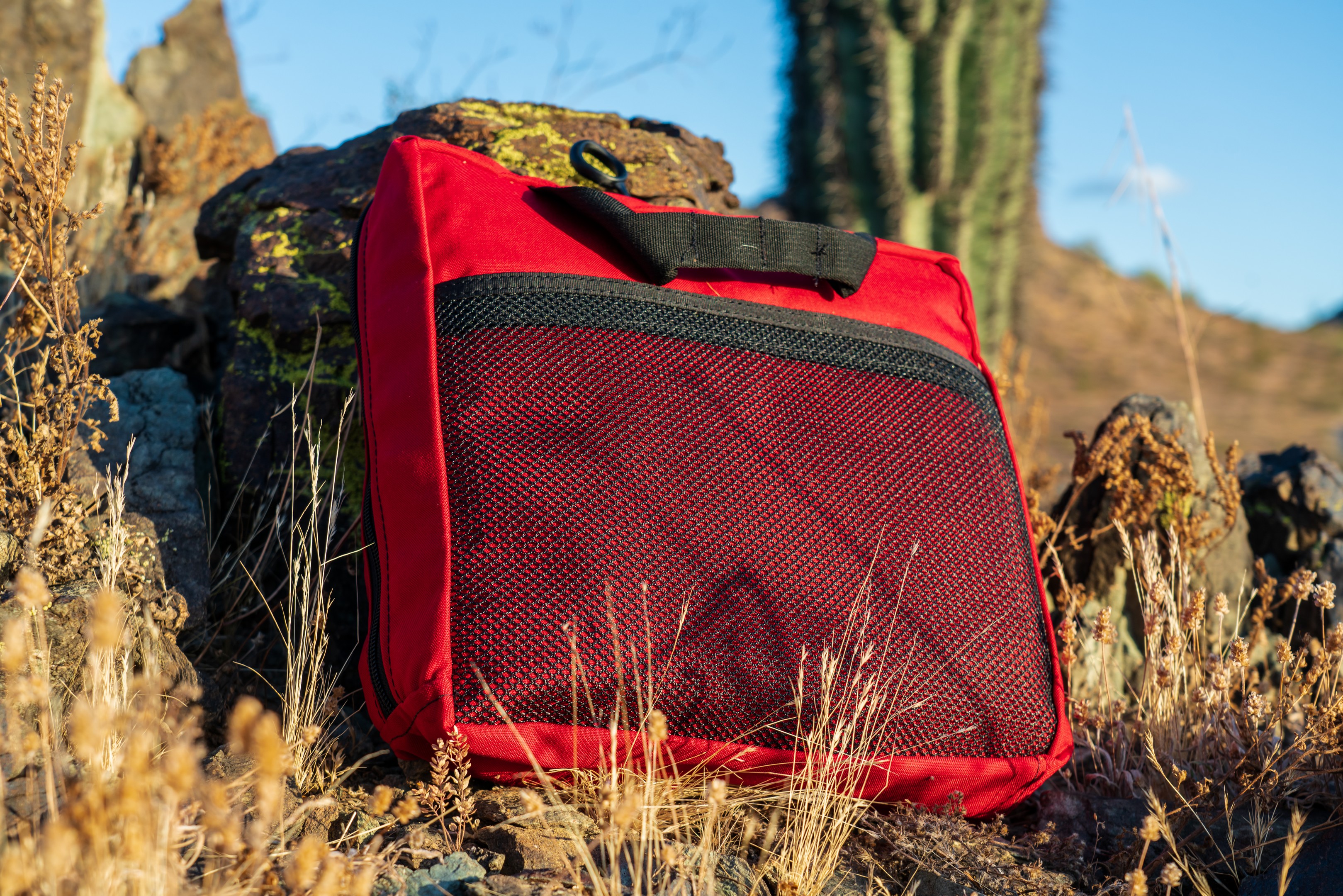
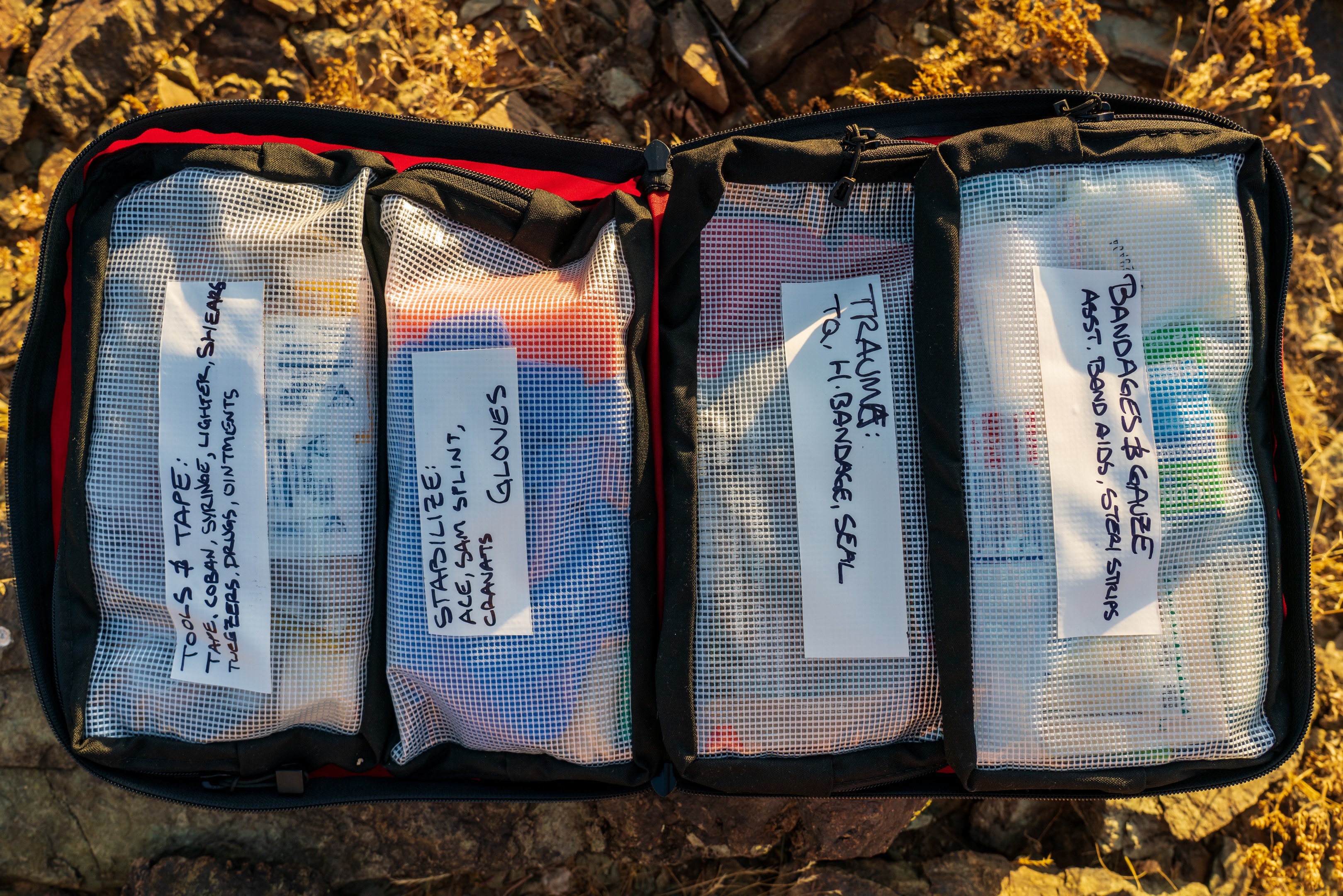
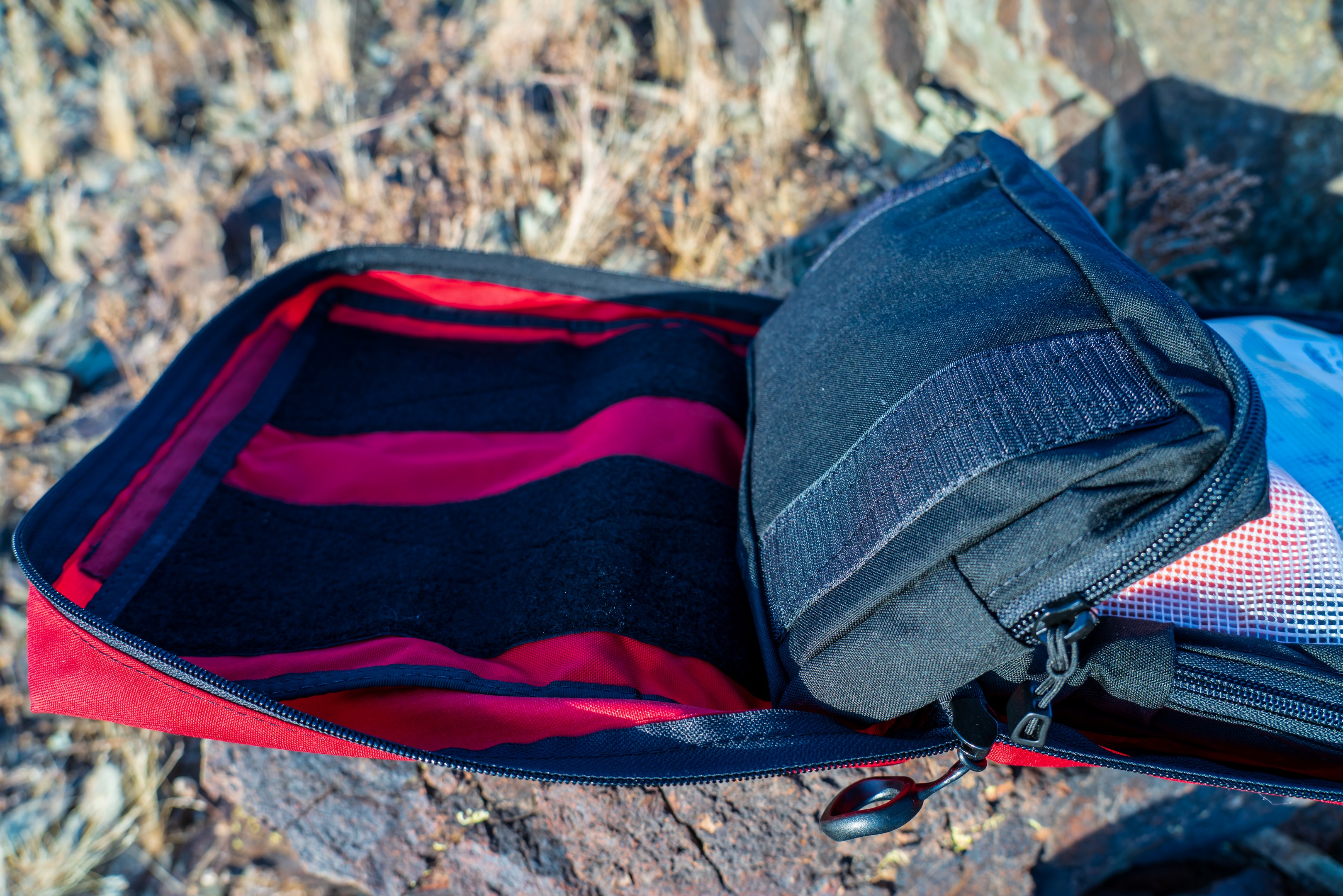


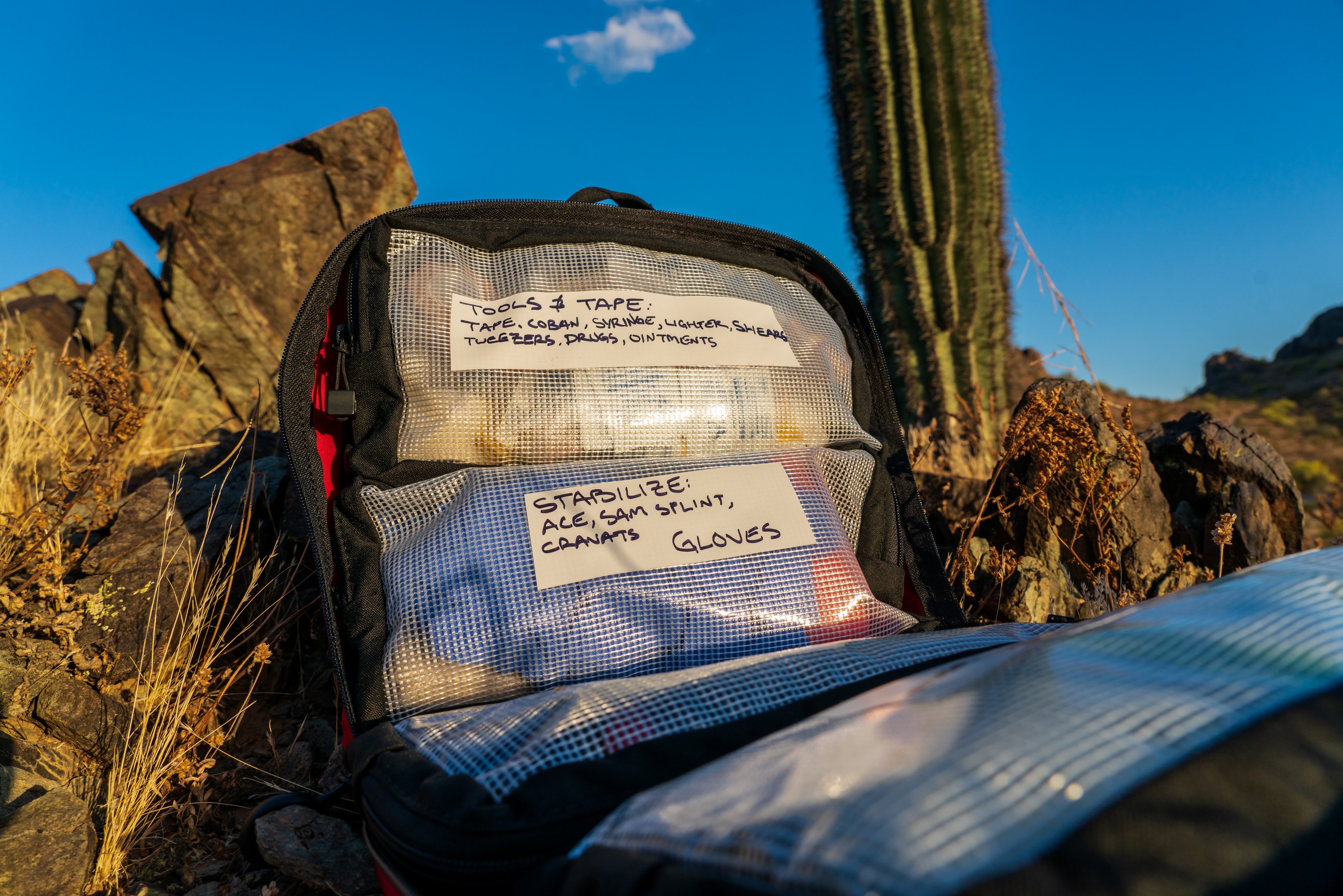
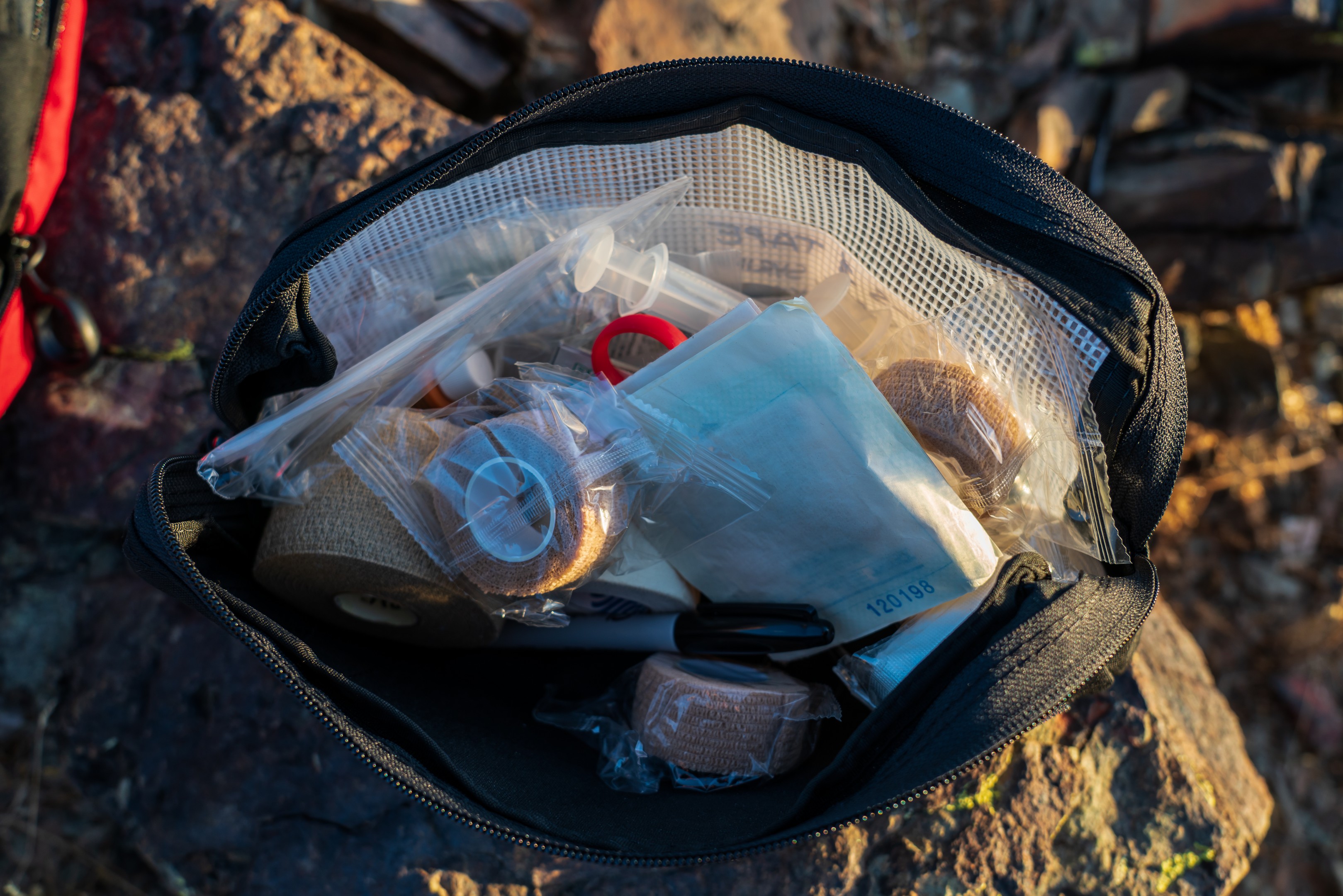

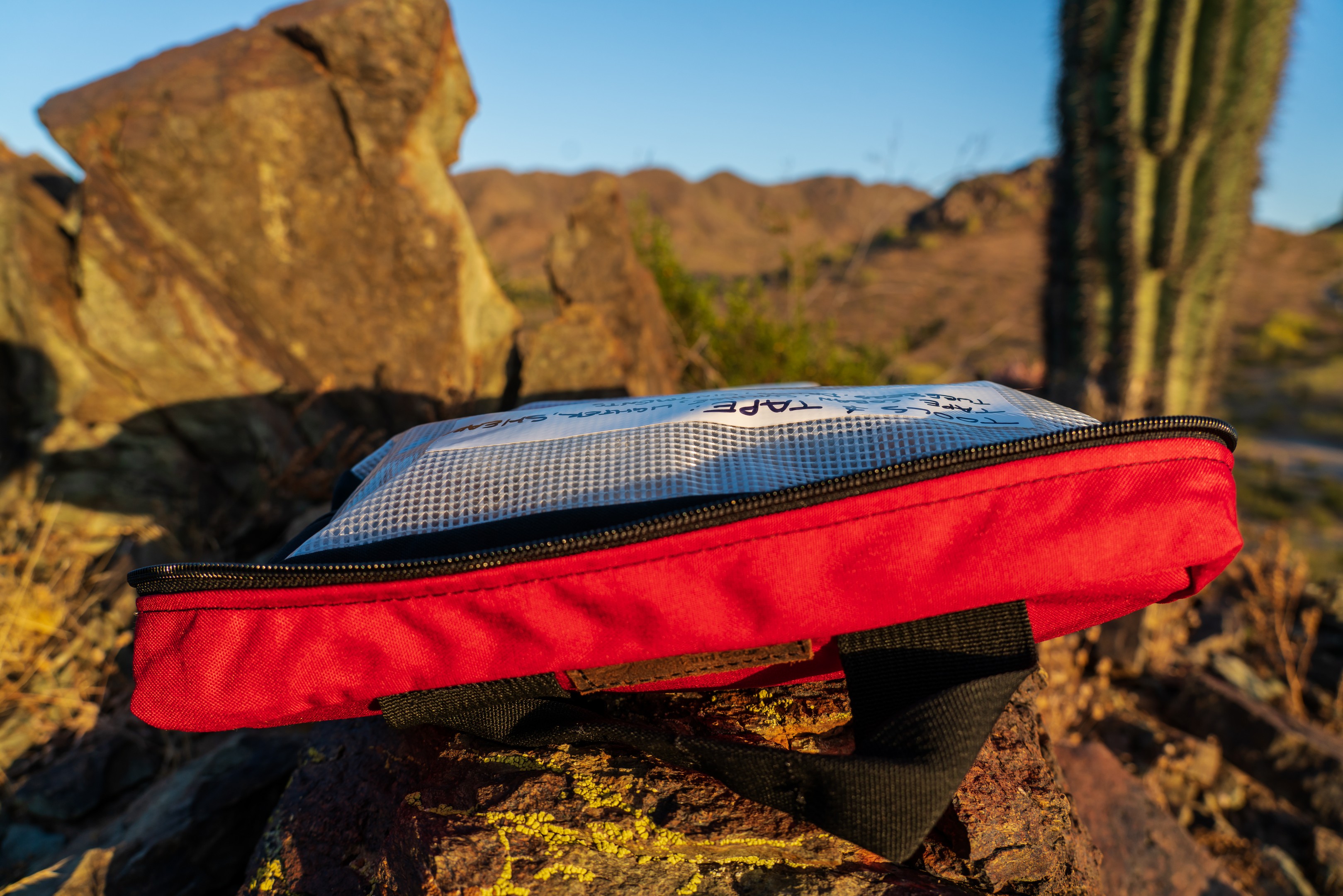

 BROG also makes a number of innovative products that help you carry specialty items like their chainsaw bra, which enables you to carry a saw in a hard case on your roof rack. Chainsaws are wonderfully messy tools and a pain to transport. Even if you’re one of the few people who can avoid overfilling the bar oil and fuel tanks on your saw, there’s still sawdust, two stroke spooge, and the occasional drip of bar oil from your bar that causes most folks to carry their saws in their truck beds or in a way that puts layers of protection between the saw and their vehicles interior. Yet, with the chainsaw bra, you can simply pop your saw in it’s hard case, and with 4 1-inch in cam straps secure it to your roof where it’s unable to drip or destroy anything in or on your vehicle you care about.
BROG also makes a number of innovative products that help you carry specialty items like their chainsaw bra, which enables you to carry a saw in a hard case on your roof rack. Chainsaws are wonderfully messy tools and a pain to transport. Even if you’re one of the few people who can avoid overfilling the bar oil and fuel tanks on your saw, there’s still sawdust, two stroke spooge, and the occasional drip of bar oil from your bar that causes most folks to carry their saws in their truck beds or in a way that puts layers of protection between the saw and their vehicles interior. Yet, with the chainsaw bra, you can simply pop your saw in it’s hard case, and with 4 1-inch in cam straps secure it to your roof where it’s unable to drip or destroy anything in or on your vehicle you care about.


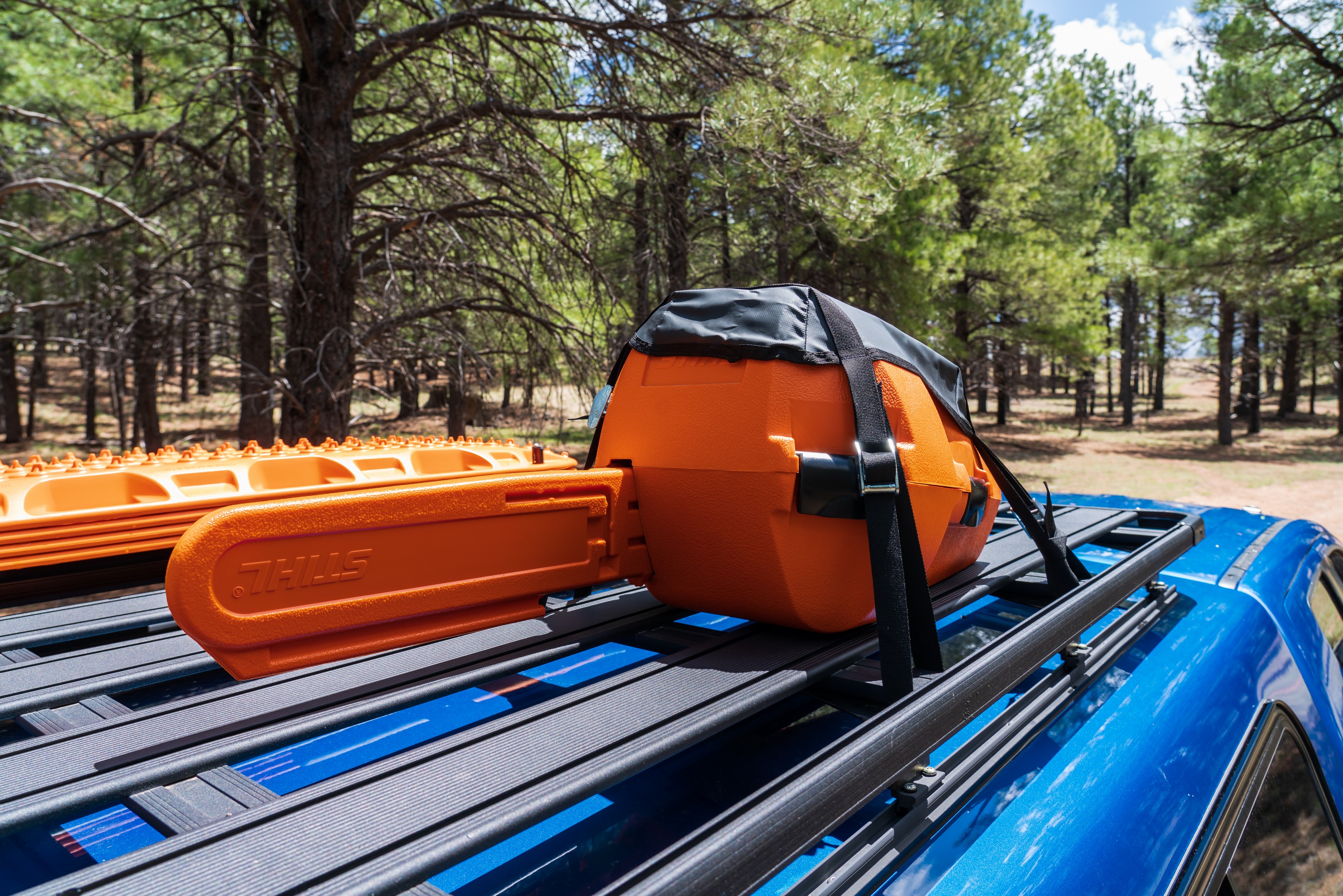
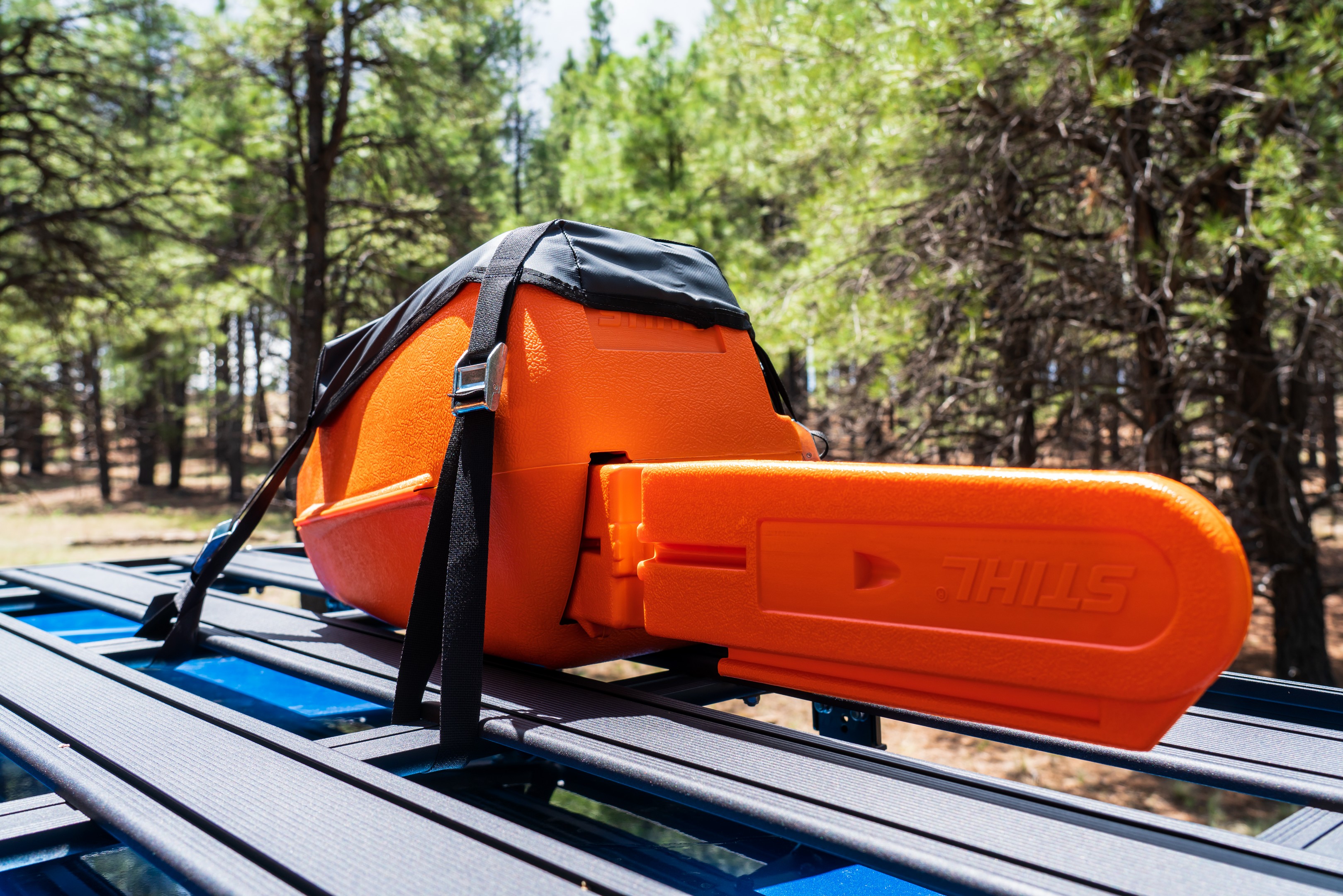
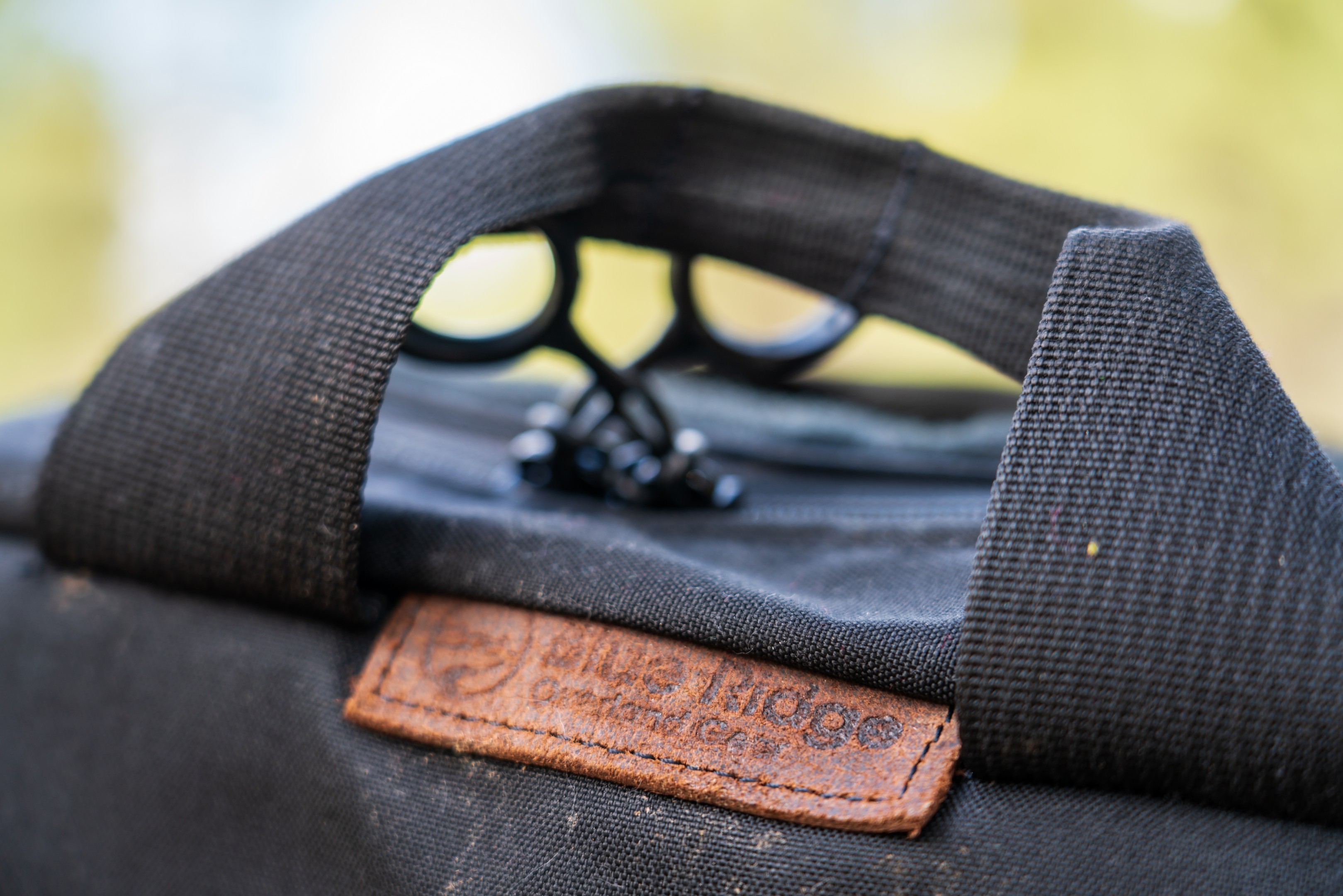 There’s no shortage of cheap bags and cases out there, and it’s been my experience that you get what you pay for. With BROG, you’re getting handmade gear that’s designed by a team of folks who are clearly putting some thought and effort into functional, made in USA gear that is going to last. I think the last line of their warranty sums the company up perfectly: “People who are hard on gear are our kind of people.”
There’s no shortage of cheap bags and cases out there, and it’s been my experience that you get what you pay for. With BROG, you’re getting handmade gear that’s designed by a team of folks who are clearly putting some thought and effort into functional, made in USA gear that is going to last. I think the last line of their warranty sums the company up perfectly: “People who are hard on gear are our kind of people.”